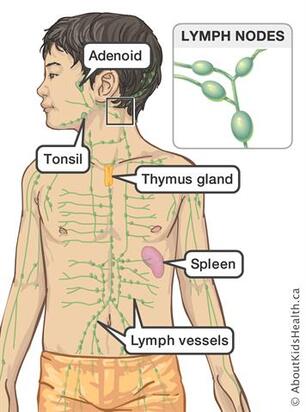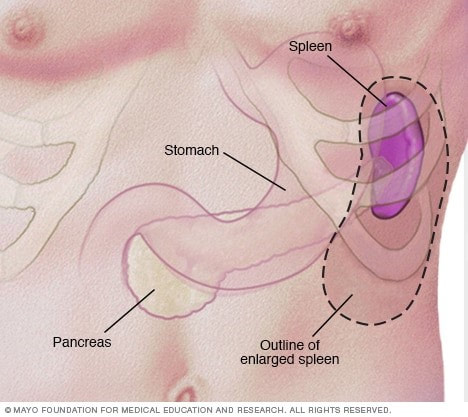|
As seen in Home Herbalist Magazine, Fall 2020 - By Clinical Herbal Therapist, Petra Sovcov As the changing of the season comes, temperatures shift again, days get longer, and the flu and cold season often hits its pique. For many, this is the time of year that families struggle with the flu, coughs, and colds, as with school and spring break travel children are more readily exposed to a variety of pathogens. This can pose a challenge, as various “bugs” are brought home and lovingly shared with family members. In this month’s article, we will talk about the immune system and break down some of its more important parts. We will briefly discuss the lymphatic system, innate immunity, adaptive immunity, the difference between the two, and discuss the immune response. We will also discuss the spleen and its importance to overall health. Additionally, we will talk about a few helpful herbs for supporting children’s immune systems, along with supplement and dietary/lifestyle suggestions that can be implemented quickly. As with most of what I write in this article, I will not be implementing a full herbal protocol or complete “how to,” as everyone is different and has their own needs. If you feel you would like to implement herbal remedies or have questions, please reach out to a clinical/medical herbalist in your area, or you may reach out to me with any [email protected] Before we begin: I am not a Medical Doctor, nor are any of the suggestions or recommendations I am about to make meant to be a substitute for advice from your MD, or as a substitute for any prescriptions you may be taking. Any suggestions followed will be the responsibility of the reader and are stated with the intention of interest and education only. If you have a health issue, please see your primary care physician first and foremost. When we speak about immunity, we often think of the fundamentals, such as killer t-cells, antibodies, and the immune response in general. However, in my opinion, we cannot start a discussion about immunity before we understand the basics of the lymphatic system.
When using skeletal muscles (such as the calves in our lower legs) there is a pump action that takes places. The skeletal muscle contractions compress lymphatic vessels (as well as veins) and forces lymph towards the junction of the internal jugular and subclavian veins. Secondly, regarding our respiratory system, the “respiratory pump” action is maintained by pressure changes that occur during inhalation (breathing in). Lymph flows from the abdominal region, where the pressure is higher, toward the thoracic region where it is lower. When the pressures reverse during exhalation (breathing out), the valves in lymphatic vessels prevent backflow of lymph. Therefore, keeping active and mobile is so important for general health. A child (or adult) who is sedentary may have more challenges during cold and flu season than one who is actively playing, exercising, and going outdoors. The lymphatic system consists of a fluid called lymph (no surprise there). Throughout the system there are vessels called lymphatic vessels that transport lymph to structures and organs containing lymphatic tissues. It also assists in circulating body fluids and helps defend the body against disease-causing pathogens. The lymphatic system has three primary functions:
contrast, red pulp consists of blood-filled venous sinuses and cords of splenic tissue. Within the red pulp, the spleen performs two important immune functions:
Knowing this, when we think about the lymphatic system and immunity in children, there are a few things we may want to consider. First, as mentioned above, making certain that a child is active: that they have time to play and move their bodies (thus moving lymph). Second, being certain that they have a diet rich in nutritious foods so that the lymphatic system can move those wonderful lipid soluble vitamins to places they need to be. And last, when needed, they are given additional support. In this case, since we are talking about herbs, we would want herbs that help gently move lymph and support the liver and spleen, herbs that are adaptogenic, immune-stimulating or immunomodulating. If an illness becomes present, perhaps the use of more specific herbs that can act as anti-microbials, anti-bacterials, or anti-virals may be used. We will visit these herbs later in the article. General Immunity When speaking about the immune system, it is important to know that there are two types of immunity: innate immunity and adaptive immunity. These are both complex systems with multiple lines of defense. There is an entire study dedicated to this called immunology whereby scientists study the immune system and its various workings and reactions to pathogens. To give a full explanation of how these functions work would span a complete book, however, I will do my best to capture it in a brief summary. Innate Immunity Can be considered a nonspecific type of immunity. It is what we naturally possess to protect us from the outside world. Innate immunity includes the external physical and chemical barriers provided by the skin and our mucous membranes (consider the eyes, nose, ears, and mouth). Additionally, innate immunity includes various internal defenses such as antimicrobial substances, natural killer cells, and the body’s natural reactions such as inflammation and fever. Our first line of defense in our innate immunity is our skin and mucous membranes. These provide a physical barrier that actively discourage pathogens and foreign substances from penetrating into our body where they could cause disease. Our skin is made up of many, many layers of closely packed keratinized cells, the outer layer of this is known as the epidermis which provides a sealed barrier against the outside world. Bacteria rarely penetrate the intact surface of a healthy epidermis. In comparing this to our other first line of defense, our mucous membranes create a fluid called mucous (again, think of your nose, eyes, ears, and throat/airways). Because mucous is slightly viscous (slimy), it traps many microbes and foreign substances. The mucous membrane of the nose and upper respiratory tract has microscopic mucous coated hairs that trap and filter microbes, dust, and pollutants from inhaled air. These microscopic hairs are called cilia. The cilia produce a waving action which propels inhaled dust and microbes trapped in mucous towards the throat. Coughing and sneezing accelerates this movement and expels the trapped microbes out of the body, or in cases where the mucous is swallowed, the pathogens are sent to the stomach where gastric juices destroy them. Our second line of defense in innate immunity is internal: antimicrobial substances that discourage growth such as phagocytes, natural killer cells, inflammation and fevers (as mentioned above). There are four types of antimicrobial substances in innate immunity:
A natural killer cell (NK cell or just NK) is a type of white blood cell. NK cells are present all over the body but also in the spleen, lymph nodes, and red bone marrow. Unlike other white blood cells, the NK cells can kill a wide variety of infected body cells and certain tumour cells. They generally attack any body cells that display abnormal or unusual plasma membrane proteins. A phagocyte (as we briefly mentioned above) is a type of cell within the body capable of engulfing and absorbing bacteria and other small cells and particles. Adaptive Immunity – This is where things get interesting, and very specific. The name itself really offers a clue as to how this type of immunity works; it adapts to how the body needs to react and to the various types of pathogens it comes across. More amazingly, it remembers how it reacted to a type of pathogen, which is why after catching a type of flu, often we do not catch it again until the next viral mutation comes along to impact our immune system. Adaptive immunity is described as the ability of the body to defend itself against specific invading agents such as bacteria, toxins, viruses, and foreign tissues. This is known as adaptive, or specific immunity. Two properties distinguish adaptive immunity from innate immunity:
Now that we have a basic understanding of this very complicated system, we can better understand what types of herbal actions we might take to help the immune system. However, since we are talking about children, we need to take care regarding some of our herb choices, specifically concerning the dosage. Children under the age of 12 will not be offered an adult dose of herbs, so please consider this before choosing specific herbs for your children or consult someone who understands how dosage works (A clinical herbal therapist would be perfect for this). Some Helpful Herbs for Immune Support in Children: Astragalus (Astragalus membranaceus) – This herb is considered an adaptogen, and is also considered to be antioxidant, immunostimulant, immunomodulator, anti-viral, anti-bacterial, circulatory stimulant, cardiotonic, and increases vitality and energy levels. It is supportive of the immune system, spleen, and liver, and improves immune resistance. It is often used in viral infections and feelings of fatigue. A few things to consider, it should not be used in cases where immuno-suppressive drugs are being used, and it is not considered appropriate in cases where acute infection and high fever may be present. Echinacea (Echinacea purpurea or angustifolia) – Traditionally used in snake bites and cases of blood sepsis. Today, echinacea is sold as an immune enhancer. In my opinion this is not an accurate depiction of this herb, however, it does not make it any less potent in assisting the immune system. echinacea is a general tonic and immune stimulant; it is lymphatic, antiseptic, antimicrobial, antibacterial, and some consider it to have a slight antibiotic activity. Additionally, it is considered to be anti-viral, anti-inflammatory, and to have detoxifying properties. echinacea works not necessarily by attacking the pathogen, but rather, by helping the body to make internal adjustments to change the environment where the pathogen may thrive, thus making it difficult to complete its life cycle. Like astragalus, it is not appropriate where immune-suppressive drugs are being taken, or in cases of some autoimmune conditions. Cleavers (Galium aparine) – This is a beautiful and gentle lymphatic herb. It is considered to be tonic and somewhat adaptogenic. It is also anti-inflammatory, astringent, and detoxifying. I often use this herb for clients who want to gently detox or keep their lymphatic system healthy without the more aggressive actions of some of the stronger lymphatics that are available to us. There are no known contraindications with this herb, and I could not locate any reported drug interactions. Elder Berry (Sambucus nigra) – Using either the beautiful berries or the flowers, European black elder is, in my opinion, a must have for a children’s herbal medicine cabinet. It can be taken as a tea (the flower) or even as a syrup (the berries). It is considered a gentle immune supporter, anti-inflammatory, alterative, and antiseptic. Lavender (Lavandula angustifolia) – This beautiful flower packs a punch. Often used as a nervous system tonic and sedative, it is also antiseptic, antimicrobial, antibacterial, digestive, carminative, and antispasmodic. For the immune system, it can be used in the presence of infections and for colds and flus, chest infections, and cough. It can also be used in cases of sinus infection and loss of voice. Its quite broad in its uses and is considered a food-based herb. Sage (Salvia officinalis) – Another versatile food-based herb, sage is considered to be tonic, antioxidant, antiseptic, anti-microbial, anti-bacterial, anti-viral, anti-fungal, anti-inflammatory, astringent, expectorant, circulatory stimulant, digestive, carminative, and antispasmodic. It can be used in a variety of situations with children. For acute infections it can be very helpful and can be used for most colds, flus, and coughs. A few important things to take into consideration, sage should not be given to someone with epilepsy, hematuria, or high blood pressure. Additionally, it is not an herb that should be taken at high doses or for long extended periods of time due to the presence of thujone. Also, it should not be taken if someone is on anti-convulsant drugs, sedatives, or on anti-diabetic meds. Tasty Immune Supporting Children’s Tea: Rosehips 20g Lavender 15g Elder Flower 20g Blessed Thistle 15g Licorice Root 15g Cleavers 15g 100grams total (In children’s doses, enough to last through cold and flu season) To prepare: - For children under the age of 12, use ¾ teaspoon to 1 cup boiling water, steep for 5 minutes covered, strain and drink one to two cups daily. - For children under the age of 10, use ½ teaspoon to 1 cup boiling water. - For children under the age of 5, use ¼ teaspoon to 1 cup boiling water. - For children under the age of three, consult a practitioner. Suggested Supplements: Since I do not feel that supplements are always appropriate for children, there is only one type I would suggest. Due to foods being depleted from depleted soils, my opinion is that a good children’s multivitamin is often very helpful. For these I generally suggest Thorne brand or Children’s liquid Intramax by Drucker labs – please consult a practitioner prior to use. Dietary and Lifestyle Suggestions:
Although many of these suggestions are simple, I find that starting simply is often the best. Complicated products and too many supplements (in my opinion) can’t make up for clean air, activity, and healthy foods. I hope you have enjoyed reading this article, and that the richness of our herbal allies has shown once again that for mankind’s maladies, nature has supplied us with a remedy. In Health and Wellness, Petra References:
1 Comment
|
Petra Sovcov is not a Medical Doctor (MD) nor a Naturopath (ND), she is a Clinical Herbal Therapist (CHT) and holds a Doctorate in Natural Medicine (DNM). The suggestions or recommendations made on this site are not meant to be a substitute for advice from your MD, or as a substitute for any prescriptions you may be taking. Suggestions followed will be the responsibility of the reader, and are stated with the intention of interest and education only. If you have a health issue, please see your primary care physician (MD) first and foremost. Categories
All
Archives
July 2024
|




 RSS Feed
RSS Feed